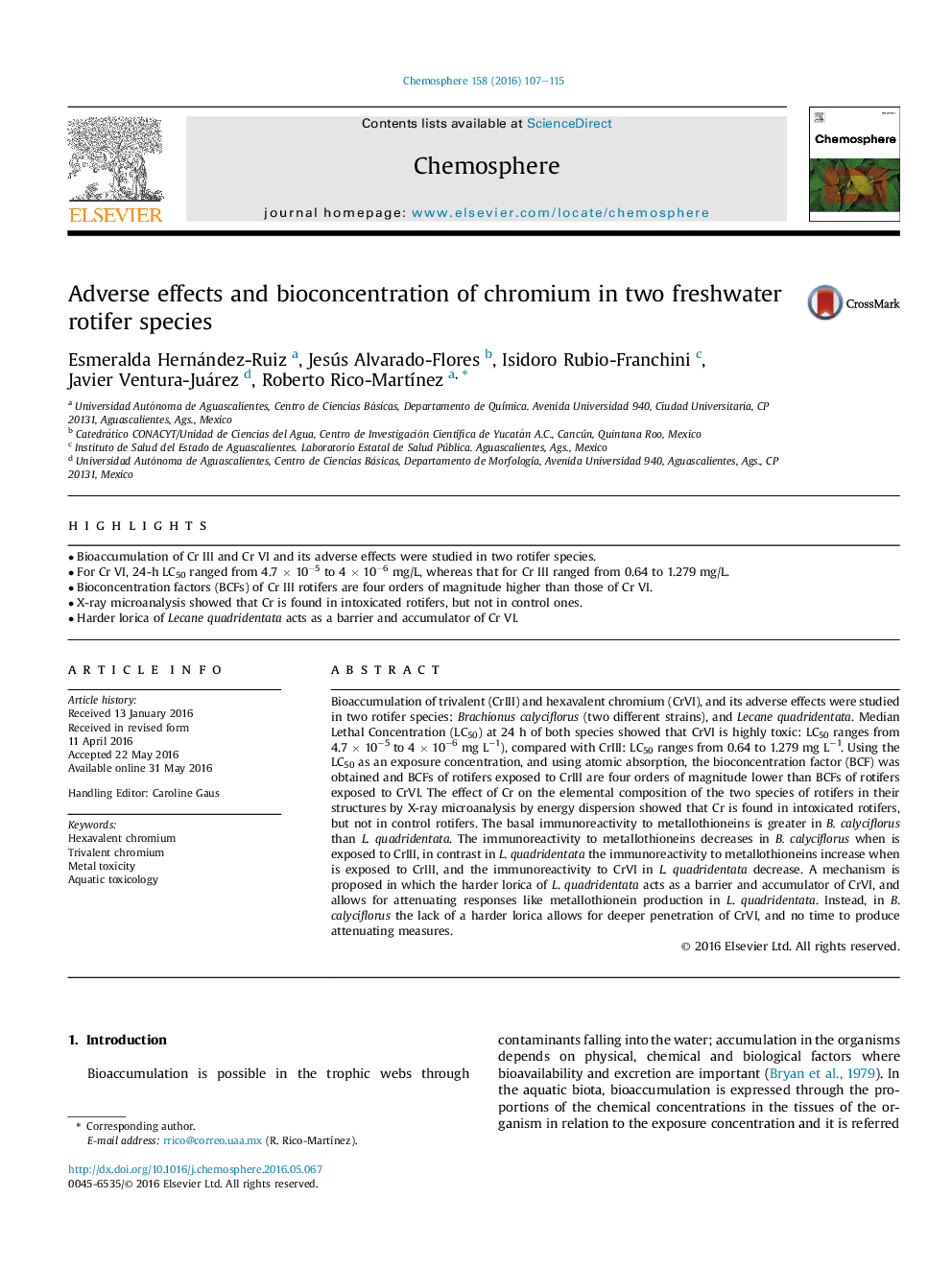| Article ID | Journal | Published Year | Pages | File Type |
|---|---|---|---|---|
| 4407579 | Chemosphere | 2016 | 9 Pages |
•Bioaccumulation of Cr III and Cr VI and its adverse effects were studied in two rotifer species.•For Cr VI, 24-h LC50 ranged from 4.7 × 10−5 to 4 × 10−6 mg/L, whereas that for Cr III ranged from 0.64 to 1.279 mg/L.•Bioconcentration factors (BCFs) of Cr III rotifers are four orders of magnitude higher than those of Cr VI.•X-ray microanalysis showed that Cr is found in intoxicated rotifers, but not in control ones.•Harder lorica of Lecane quadridentata acts as a barrier and accumulator of Cr VI.
Bioaccumulation of trivalent (CrIII) and hexavalent chromium (CrVI), and its adverse effects were studied in two rotifer species: Brachionus calyciflorus (two different strains), and Lecane quadridentata. Median Lethal Concentration (LC50) at 24 h of both species showed that CrVI is highly toxic: LC50 ranges from 4.7 × 10−5 to 4 × 10−6 mg L−1), compared with CrIII: LC50 ranges from 0.64 to 1.279 mg L−1. Using the LC50 as an exposure concentration, and using atomic absorption, the bioconcentration factor (BCF) was obtained and BCFs of rotifers exposed to CrIII are four orders of magnitude lower than BCFs of rotifers exposed to CrVI. The effect of Cr on the elemental composition of the two species of rotifers in their structures by X-ray microanalysis by energy dispersion showed that Cr is found in intoxicated rotifers, but not in control rotifers. The basal immunoreactivity to metallothioneins is greater in B. calyciflorus than L. quadridentata. The immunoreactivity to metallothioneins decreases in B. calyciflorus when is exposed to CrIII, in contrast in L. quadridentata the immunoreactivity to metallothioneins increase when is exposed to CrIII, and the immunoreactivity to CrVI in L. quadridentata decrease. A mechanism is proposed in which the harder lorica of L. quadridentata acts as a barrier and accumulator of CrVI, and allows for attenuating responses like metallothionein production in L. quadridentata. Instead, in B. calyciflorus the lack of a harder lorica allows for deeper penetration of CrVI, and no time to produce attenuating measures.
